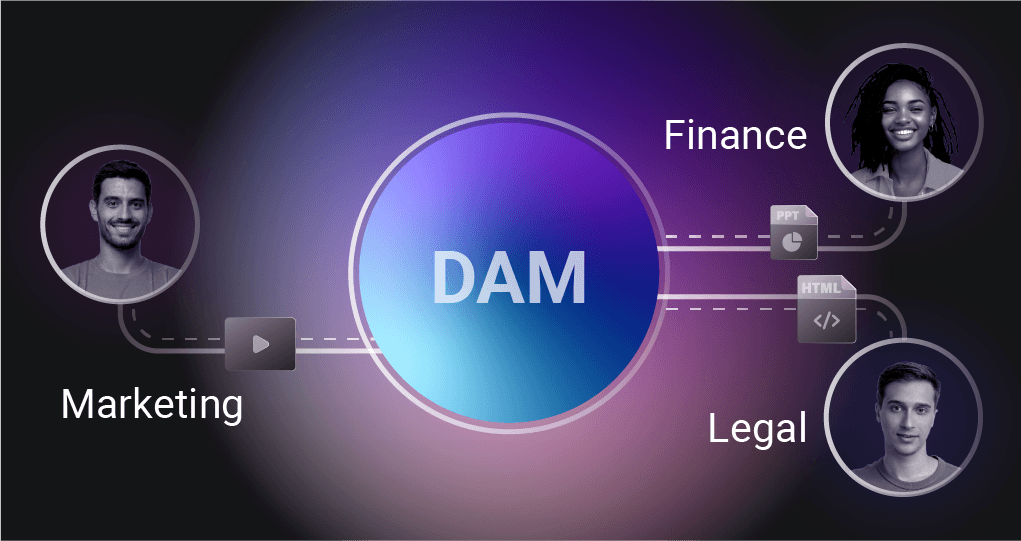If your team’s drowning in folders, chasing down the latest file version, or stuck in endless approval loops—it might be time to rethink how you manage content. That’s where a Digital Asset Management (DAM) system comes in.
A DAM gives teams a central place to store, organize, and share digital content. It helps everyone move faster, stay aligned, and keep everything on-brand.
TL;DR
A Digital Asset Management (DAM) system centralizes content storage, streamlines creative workflows, and ensures brand consistency across teams. It enables faster asset retrieval, better version control, and easier content reuse—especially valuable for marketing and creative teams managing high content volumes. DAMs help reduce duplication, accelerate approvals, and support scalable, compliant content operations. If your team is still relying on shared drives and email threads, it’s time to modernize.
Why use a DAM system?
As content demands grow, things get messy—especially across global teams and fast-moving campaigns. A good DAM brings structure to that chaos and helps you scale without losing control.
Top benefits of a DAM system
| Feature or Capability | Why It Matters |
|---|---|
| Faster asset retrieval | Metadata tagging and search help you find content instantly |
| Stronger brand control | Permissions and usage tracking keep off-brand content in check |
| Streamlined creative workflows | Integrated reviews and approvals cut out back-and-forth |
| Improved content reuse | Repurpose assets across teams, formats, and regions |
| Compliance and auditability | Track usage and version history to stay on the safe side |
| Version control | Know exactly what’s current—no more duplicates |
| Scalability | Supports large teams and high content volumes without slowing down |
Who benefits from a DAM?
Marketing, creative, and content operations teams are the biggest winners—but really, any team that creates or uses digital content will feel the impact. A DAM makes it easier to manage the content you already have and get more from it, faster.
It also saves time and cost by cutting down on duplicate work and speeding up how content moves from creation to launch.
Wrap Up
If you’re still relying on shared drives, email threads, or clunky folder systems, a DAM can be a game-changer. It doesn’t just store files—it makes your content operation more efficient, more secure, and a lot easier to scale.
FAQ
Who uses a DAM system?
Marketing, creative, brand, legal, product, and even IT teams use DAMs to collaborate on content, maintain brand consistency, and streamline workflows.
Can I control who sees or uses certain assets?
Yes—DAM systems offer robust user rights management. You can control access by role, region, team, or external partner (like agencies). This ensures the right people see the right content—no outdated versions or off-brand assets slipping through.
How does a DAM improve efficiency?
By providing one centralized location with smart search, version control, and automated workflows, DAM systems eliminate time wasted on asset hunting and reduce duplication.
Is a DAM only for large enterprises?
Nope. While enterprises benefit most, mid-sized and growing teams also gain major advantages—especially if they work with high volumes of content or across distributed teams.
Can a DAM system integrate with other tools?
Yes! DAMs often integrate with CMS, PIM, CRM, creative tools (like Adobe CC), and marketing platforms, making them the foundation of a scalable content tech stack.



